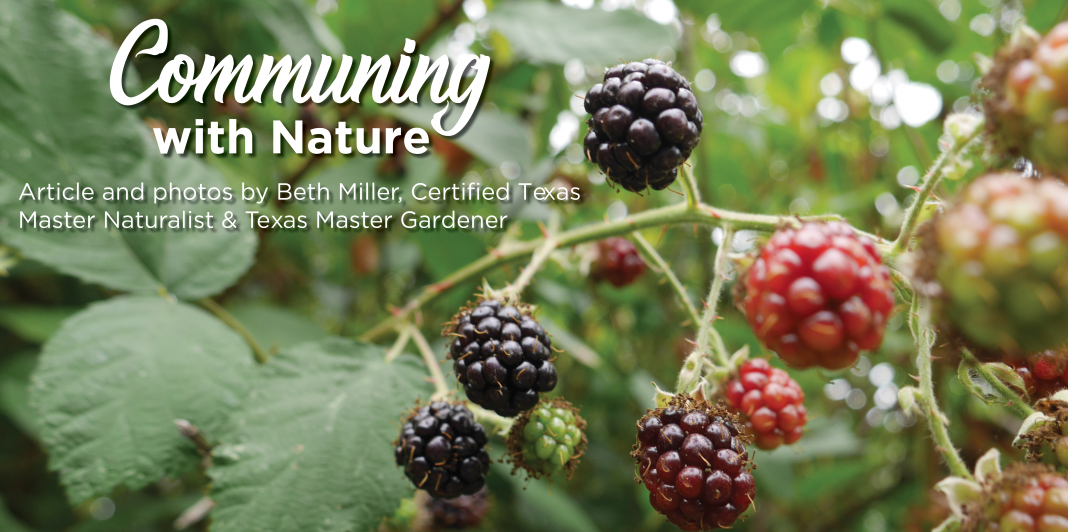You don’t have to wander very far to find a rich source of food, natural healing aids, building tools, and outstanding brewed beverages. Foraging for food has been an important part of human evolution from its beginning. Excellent forage is available throughout the year, but for this article I will focus on fall foraging opportunities.
Whether you take a walk in a woodland park, meadow, wetlands, or even your own yard, you will surely find a few of the most available foraging sources in southern east Texas range, Harris, Montgomery, Walker, Polk, and San Jacinto Counties. Here are seven:
American Beautyberry (Callicarpa americana) – I have three of these beautiful understory bushes that bloom with white fringy flowers in the summer which become stunning purple/magenta berries lining every branch. Eaten raw the berries have a rather medicinal taste, but wow do they make a great jam or jelly. That is if you can get to them before the birds, deer and racoons get them. The leaves have shown DEET-like property to repel mosquitos, just crush and rub on clothing.
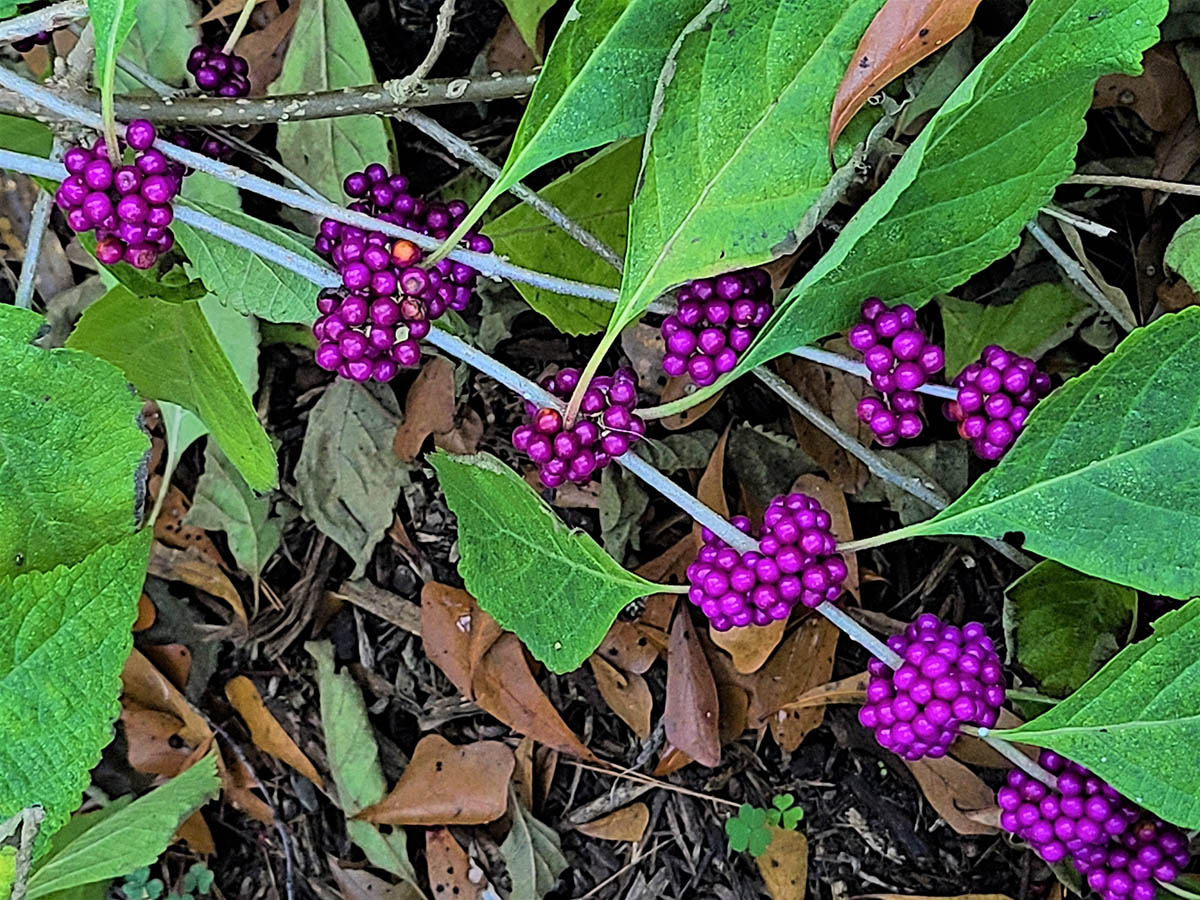
Dandelions (Taraxacum officinale) – This is one of the superfoods of foraging because they are packed with vitamins, minerals, and protein and can be used in many ways. It takes some work, though, to get past the strong bitter flavor of this plant. Mix one part young leaves with nine parts milder leaves in salad; use flowers in wine-making; and roast the roots or boil for 30 minutes to make a coffee substitute. Dandelion flowers can be infused with oil for a wound healing salve; or prepare roots and leaves as a poultice or tincture for use as a diuretic, antibacterial, laxative, sedative or appetite stimulant.
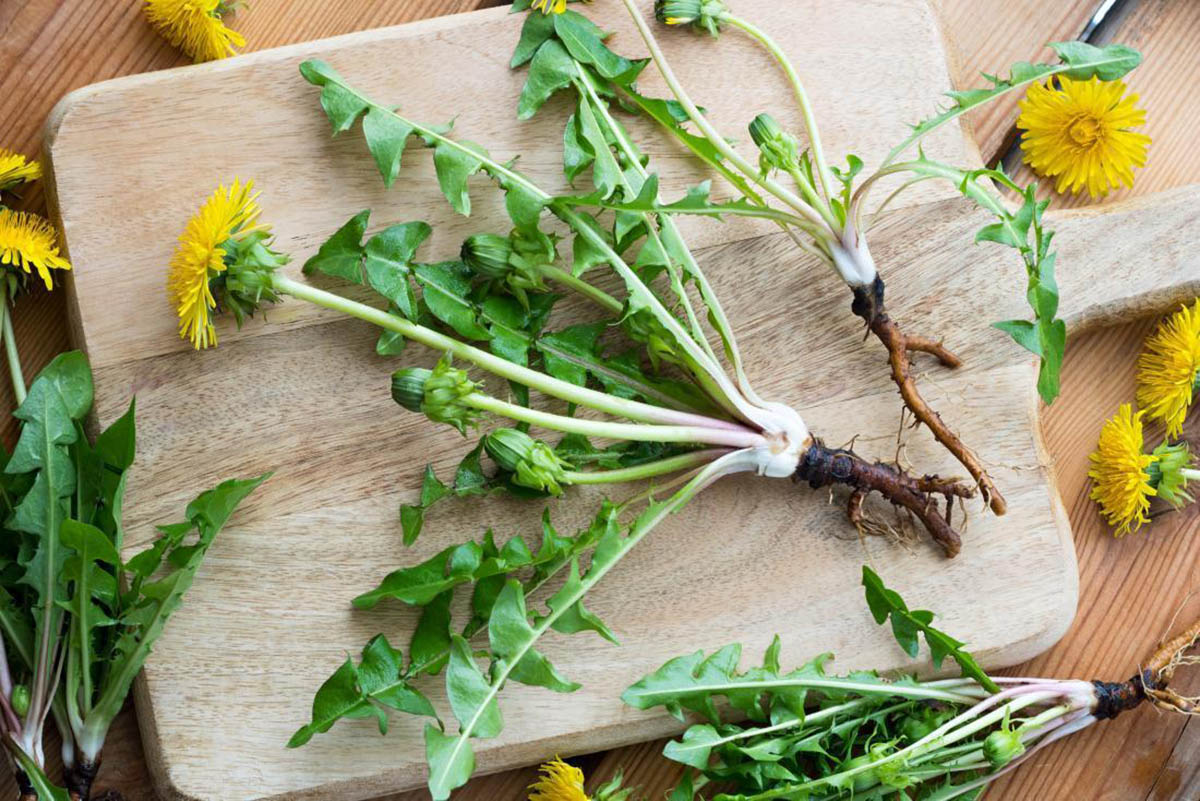
Oak Trees – Yes, all acorns are edible and have been used as a source of protein and an early flour for thousands of years. The high tannin content requires leaching before using them as a food product. While tannin leaches easily with water, but it takes several days to process crushed acorn nutmeats. They are plentiful, but you might find it easier to buy a bag of whole grain flour, unless you’re planning to tryout for Naked and Afraid or another survival reality show.

Maypop Passion Vine (Passiflora incarnata): The Maypop passion vine is common in home gardens because of its ability to lure in Gulf fritillary butterflies and provide a habitat for their larva. The flowers turn into juicy yellow fruit that are great in margaritas, raw, preserves, or tea and juice drinks. Brew the flowers into a tea and maypops can deliver a potent sedative or anti-anxiety relief. And to top it all off, they’re rich in Vitamin A and niacin.
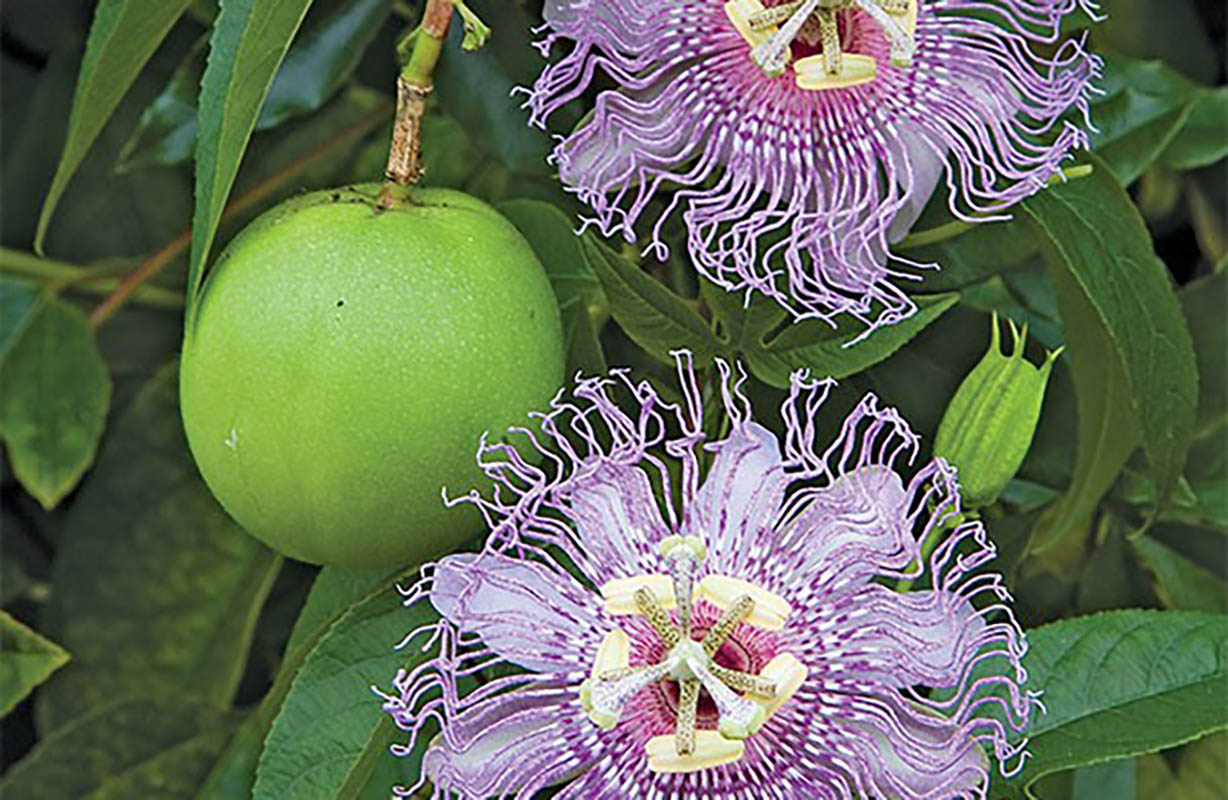
Sweet Alyssum (Lobularia maritima): Most people are surprised to when they hear this popular fall/winter bedding plant is a mustard (Brassica family). Don’t let the name Sweet mislead you, the flavor of raw, young, green seed pods have the same spicy bite as other mustards. Think of them as an off-beat replacement for radishes or with meats instead of horseradish. While the flowers can be eaten any time, you’ll prefer the seed pods when they’re still soft and green. Raw leaves can be unpleasant, but they can be cooked like traditional mustard greens. Just beware of pesticides.
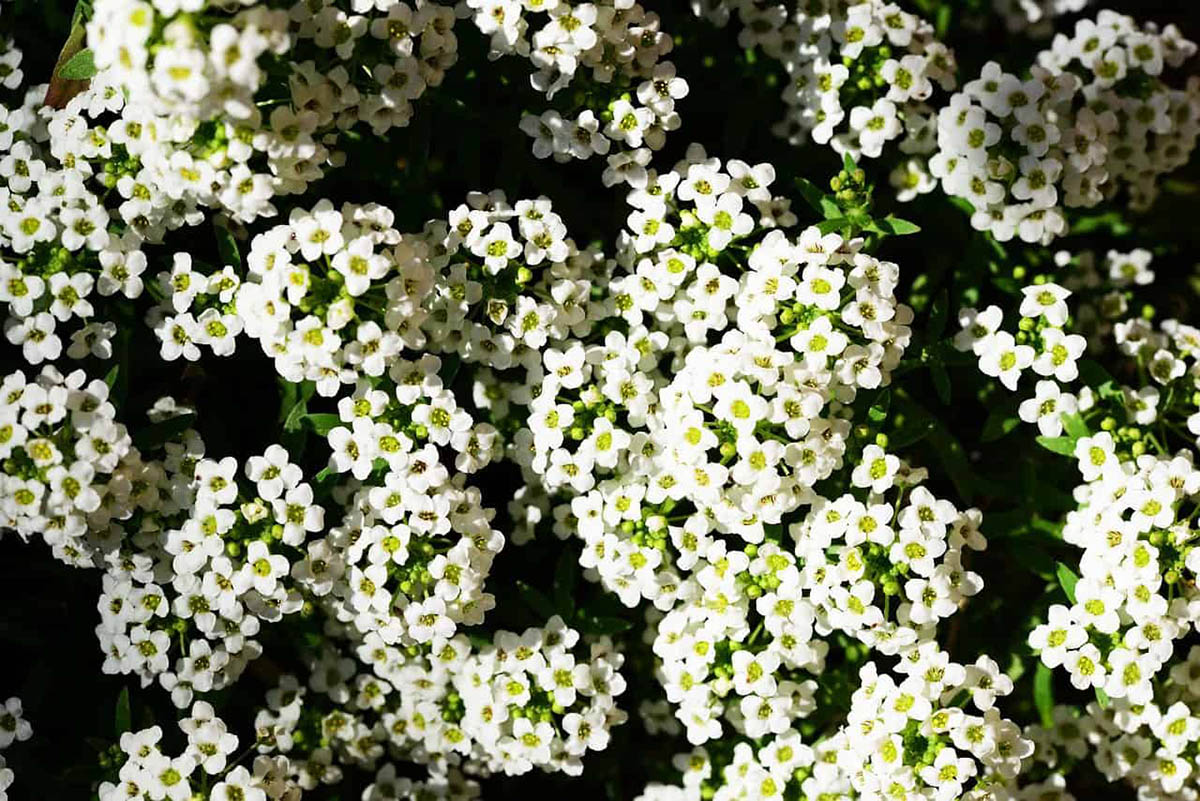
Turks Cap (Malvaviscus arboreus) – These upright or sprawling perennials, are loved by pollinators, and are almost completely edible. The young leaves can be cooked like spinach, flowers are edible and sweetest mid-morning or late afternoon, the fruit is like a tiny apple. Flowers and young leaves raw or cooked; flowers can make pink lemonade type drink; fruit can be made into tea or preserves. Flowers high in antioxidants; seeds are high in protein & starch; leaves high in minerals; fruit high in vitamin C
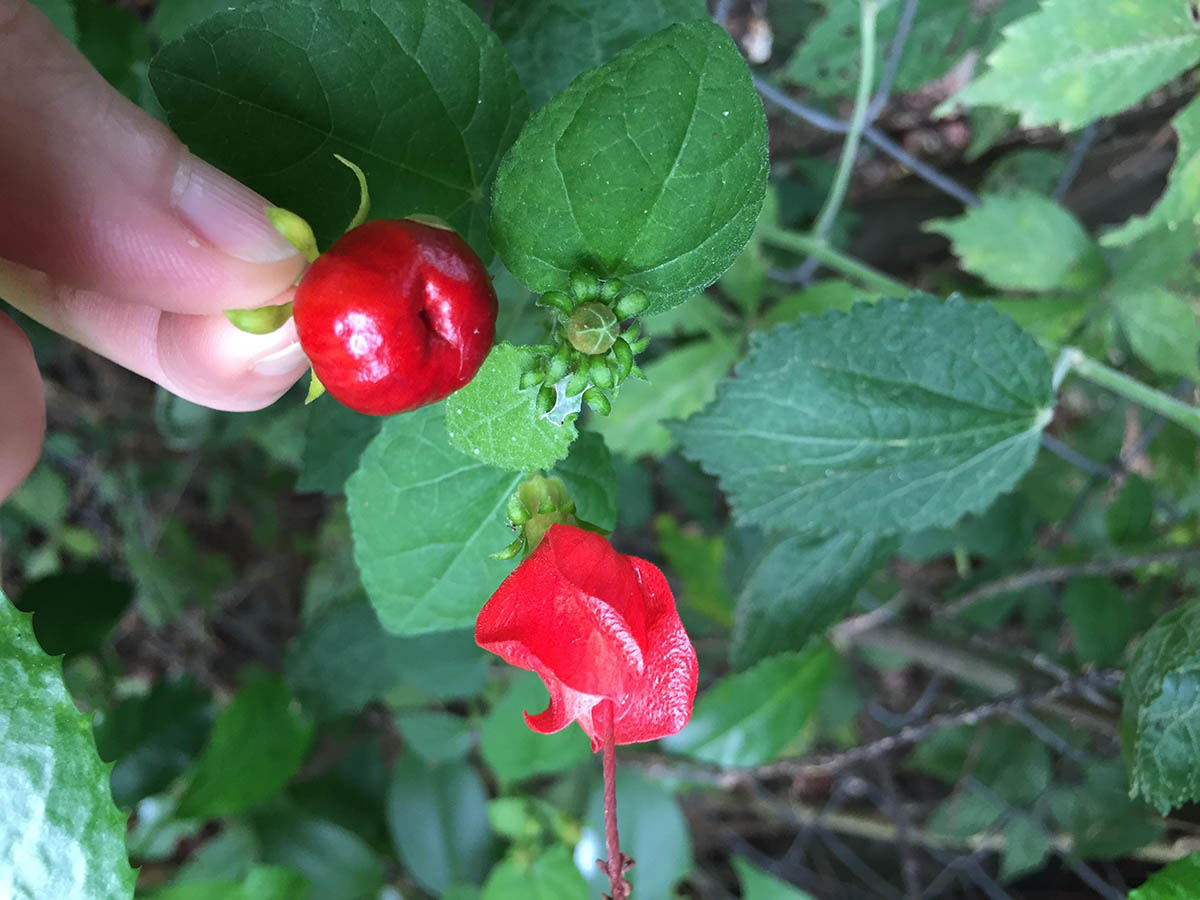
Yaupon Holly (Ilex vomitoria) – Most landowners consider them invasive, but as native plants, yaupons are well adapted to our growth region. Yaupon and the toxic Chinese privet, a true invasive, are easily confused. Learn the difference. Privet leaves grow in a smooth-edged, uniform pattern while yaupons leaves have a random, chaotic growth pattern with bumpy edges. Just remember “chaos = caffeine”! Leave the berries for the birds, just cut a well-leafed branch and hang it upside down for two weeks. Then boil the leaves for a hot beverage with half the caffeine of coffee or a green tea with similar antioxidant properties.

Dr. Mark “Merriweather” Vonderbruggen
Website – foragingtexas.com, leads classes at the Houston Arboretum and Spring Creek Greenway Nature Center You can learn more about the nature in our beautiful area by joining a chapter of the Texas Master Naturalist organization. To find a chapter close to you, or to read about the state program, go online to www.txmn.org. Volunteer and get involved!


